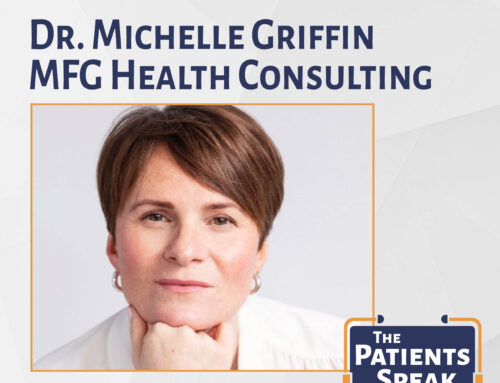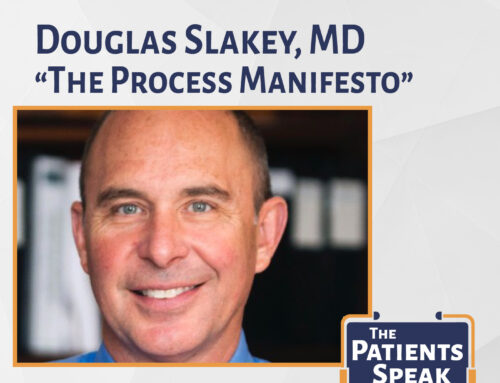Market Pulse:
Patient focus brings upside to downturn
January 06, 2023 — By Cyndi Bloom

The Market Pulse delivers the latest market trends and issues of interest to those who develop and offer approved medtech products, diagnostics, and treatments
Our warning: This is not your typical market insights report.
Our promise: The Market Pulse considers important topics from the person/patient perspective.
This issue of the Market Pulse looks at the economic downturn. Let’s see how you can help your company weather potential lows and prepare for future growth.
Should you be worried?
Recent news articles about the downturn in the economy and its impact on the medtech industry tend to go back and forth. It’s either “we’re fairly insulated against changes to the economy” or “we’re fully exposed.” There is some truth to the first one. After all, 2021 was a record year for venture capital investment in medtech. But…there are a number of key issues that began in 2021 or 2022 and will carry over into 2023:
- Supply chain instability
- Inflation’s impact on needed goods and services and the resulting squeeze on margins
- Finding and retaining qualified employees
For the most part these issues come down to higher costs for the medtech industry. So what is the impact on the patient? Higher healthcare costs? For the most part, the industry seems to be holding pricing steady and instead is looking for areas to reduce costs internally.
Coming off the pandemic, where many medical device companies took huge hits in revenue, many are worried about losing share to their competitors if they raise prices.

R&D: Don’t cut it—for the patient’s sake and yours
Although it might seem counter-intuitive, now is not the time to cut research and development. Experts say now is the time to differentiate your products and create new ones.
And of course, when coming up with new and better products and treatments, you’re looking at incorporating the patient’s perspective, right?
You’re probably familiar with the concept of Patient Preference Information (PPI). The FDA defines it as information that “captures the value that patients place on aspects of the medical device. PPI accounts for differing patient perspectives on benefits and risks that come with using that device or treating the condition.” This information can come from patients, caregivers, as well as patient advocates.
PPI studies are important because they can help companies like yours figure out:
- The features/attributes that are important to patients
- Just how important these features/attributes are to them, and
- Tradeoffs patients are willing to make among the features/attributes
Gathering and using PPI: What’s the difference?
How has gathering PPI made a difference to patients and their caregivers? Here are just a few examples noted by the FDA:
- Caregiver feedback led to development of a technique for inserting tubes in children’s ears in the doctor’s office instead of on the operating table. Now it’s easier, more convenient, less costly, as well as less frightening for the children.
- Patient feedback about a home hemodialysis product made it clear that patients would accept the slightly higher risk of infection in exchange for being able to conduct dialysis at home. Again, this offers the patient convenience and time-savings.
- Patients and parents gave feedback about the safety of using an insulin pump in young children. This led the company to develop a lockout feature to prevent accidental insulin doses. Patient safety got a bump up.
Yes, the concept of gathering PPI and using it in product design has been around for a while. But only in the past few years have studies really examined the best ways to use patient preference information (PPI). Several projects conducted by the medical device innovation consortium (MDIC) looked at tools for collecting and analyzing PPI—in these cases for devices used to treat Parkinson’s disease and heart issues. They suggest an effective go-forward framework for collecting and analyzing PPI.

Patients are powering up
Speaking of paying attention to patient needs…Many sources point to growing patient empowerment as a force to reckon with in medtech.
In a recent interview, industry leaders said patients are “progressively demanding more personalized approaches and better health care experiences.”
They went on to say that the traditional path of connecting with patients through the healthcare provider “will likely not be as effective in the coming years.” We can actually begin to see this happening now. Healthcare providers are spending less time with their patients. In a recent survey of 1,000 healthcare consumers, “54% of respondents reported they spent most of their time during a healthcare visit waiting for the doctor or nurse, while only 20% said they spent most of their time talking to doctors or nurses.”
As they focus on the issues at hand, they often run out of time to share information about new treatments or products. What’s worse, they may leave patients feeling like they have more questions than answers. In fact, a 2022 survey of 500 healthcare consumers found that more than half (56%) of respondents felt that doctors do not always give patients a chance to say what they need to say. So much for a personalized patient experience.
Two more issues are making this issue even worse.
- Downsizing – There’s growing pressure on medtech companies to downsize their workforce, including field sales staff. And some Integrated Delivery Networks are even calling for medtech sales staff to be cut back. Fewer reps mean fewer interactions with healthcare providers.
- Exodus from the medical profession – According to a 2022 “Clinician of the Future” report, 47% of clinician respondents in the United States plan to leave their jobs in the next several years. And 39% expect to exit the profession altogether. You can’t help if the doctors aren’t there.
So, less information about new products and treatments is coming from field reps to the healthcare provider. Less (or no) information then trickles down to patients from the provider (if they’re even still there). This means many patients are looking to step out of the traditional path to finding solutions to their health issues. What do we know about these patients?
- They have more access to more healthcare information than ever before.
- They don’t want to wait months or even years for answers.
- They are taking a more active role in their treatment and are out there searching for answers.
It’s time to partner with patients to improve their experience and help them achieve better health outcomes. But how? We’ve talked about collecting PPI. Let’s look at some other ways to help patients.

Get connected: Technology
One way to help is through smart connected care. Connecting your devices with sensors and other digital technologies (even commercial ones) allows patient data to be collected remotely—from almost anywhere. The data can be combined and analyzed (often with the help of artificial intelligence) to provide an accurate picture of the patient’s condition. Healthcare professionals can then deliver/adjust care remotely as required.
How can smart connected care help the patient?
- It’s remote – Data can be collected and care delivered right in the patient’s own home. This boosts convenience, comfort level, and flexibility for the patient.
- It shares – Data can be shared with the patient, the healthcare provider, specialists, and the medtech provider.
Imagine the collaborative insights when patients are seen as partners and not just “passive receivers of care”!
- It supports care that’s “more automatic” – Information, analysis, diagnosis, and care can be delivered in real time (or near real time). Patients get the right care much more rapidly and experience better outcomes sooner.
- It helps provide life-saving care for the growing number of patients with chronic health conditions – As an example, patients with high risk for heart attacks can keep a new automated external defibrillator in the home. It’s connected (via the Internet of Things) “to continuously assess battery and paddle health and transmit a patient’s data to first responders and medical professionals for remote monitoring in real time.” Having one of these at hand can literally make the difference between life and death.
From the patient’s standpoint, what’s needed are:
- Guarantees that their data is secure and not open to hackers
- Ease of use
- Wearable medical devices that are almost as easy to use as commercial products (think Apple Watch) (You may have to bite the bullet and collaborate with big tech companies.)
- Implantable devices with interfaces that are simple and intuitive
- More patient involvement in what and how information is collected and shared
Get connected: Personal engagement
Something we haven’t talked about is person-to-person connection. More and more medtech companies are turning to partners who can help them connect with patients on a more personal, individualized basis. Patients want to share their healthcare journeys. They want to understand how a device or treatment may be able to help them. They want to know if they’re right for the solution and it’s right for them. The right combination of online tools and direct connection with clinical professionals can help patients understand and embrace the solutions that work best for them.
Get connected: Market intelligence
How can more patients learn about medical devices and treatments? Patients who have chosen a medical device or treatment should be encouraged to go to their own healthcare provider to discuss the solution. In many cases, these providers may never have heard of the solution. The partner helping the patients can (and should) deliver provider contact information to the medtech company so that their field reps can visit and share information about the device or treatment. This opens up the solution to many more potential patients.

2023 and beyond: taking the advantage for the patient
Getting to that world where everyone works together to make the patient’s experience better, personalized, rapid, convenient…it’s going to take some work. A focus on the patient’s needs. Tools to capture and account for patient preferences. Technology to increase patient understanding, safety, and convenience. Direct, empathetic engagement with patients. With these under your belt, you’ll be on the path to weathering the downturn and preparing for the future upswing.
There’s always more to say
This issue of Market Pulse could turn into a thesis, but nobody’s got time for that. What did we miss? What are other key questions or concerns around the future of medtech, smart connected care, or the patient focus? Visit 83bar’s page on LinkedIn to leave your feedback. We look forward to hearing from you.





